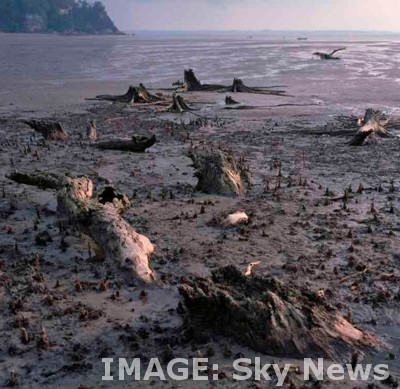Mangrove death measured
 Scientists have measured the effects of a mass mangrove dieback in the NT.
Scientists have measured the effects of a mass mangrove dieback in the NT.
There was widespread shock when swathes of mangrove forests died along a 1000 kilometre stretch of coastline in northern Australia’s Gulf of Carpentaria, but the impacts of the catastrophic climate-induced mangrove deaths did not end there.
In a world first, researchers from Southern Cross University have shown that the dead trees released significant amounts of methane - a potent greenhouse gas.
The study revealed that while living mangroves emit some methane, dead mangroves emit about eight times more.
It is the first time methane emissions from mangrove tree-stems have been quantified.
“The findings were a surprise,” said lead author and PhD candidate Luke Jeffrey.
“Currently very little is known about the role of tree-stem methane emissions globally and quantifying these from mangrove tree-stems has never been attempted.
“Due to the unique nature of the dieback event, we were able to compare methane tree-stem emissions from living and dead mangrove forests. This allowed us to understand what happens when climatic-change stressors result in forest mortality.
“What was concerning was that the dead mangrove forest emitted about eight times more methane than the living forest.”
The findings have implications for scientific understanding of how mangrove systems sequester ‘blue carbon’, which is carbon dioxide absorbed from the atmosphere and locked up in coastal wetlands such as mangroves.
“As the climate changes into the future, we may see events like the catastrophic dieback of mangroves in the Gulf of Carpentaria becoming the norm. This has significant implications for greenhouse gas emissions from these valuable coastal habitats,” Mr Jeffrey said.
The full study is accessible here.







 Print
Print